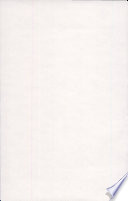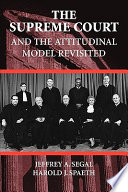 | E. Lauterpacht, C. J. Greenwood - 1991 - 788 pages
...American soil— we cannot do so in light of strikingly clear legislative history to the contrary. "It is a familiar rule, that a thing may be within...its spirit, nor within the intention of its makers." Church of the Holy Trinity v. United States, 143 US 457, 459, 12 S.Ct. 511, 512, 36 L.Ed. 226 (1892).... | |
 | United States. Tax Court - 1994 - 852 pages
...literal language. Abdalla v. Commissioner, 647 F.2d 487, 496 (5th Cir. 1981), affg. 69 TC 697 (1978). "It is a familiar rule, that a thing may be within...its spirit nor within the intention of its makers." United Steelworkers of America v. Weber, 443 US 193, 201 (1979) (quoting Church of the Holy Trinity... | |
 | R. Shep Melnick - 2010 - 372 pages
...courts should ensure the triumph of the legislative will. A century ago the Supreme Court stated the "familiar rule that a thing may be within the letter...within its spirit, nor within the intention of its makers."27 This language has been cited many times by the Supreme Court in recent years, most notably... | |
 | William N. Eskridge - 1994 - 460 pages
...statute to exclude the rector. The Court argued "that a thing may be within the letter of the statute yet not within the statute, because not within its spirit, nor within the intention of its makers." The main evidence of a contrary legislative intent was language in a committee report indicating that... | |
 | Richard A. Epstein - 1992 - 980 pages
...to training programs. He thus begins with the familiar, if overused, rule of statutory construction that "a thing may be within the letter of the statute...within its spirit, nor within the intention of its makers."11 But here the repudiation of all voluntary affirmative action was within both the intent... | |
 | Dennis Michael Patterson - 1996 - 202 pages
...(d) and upon McDonald is misplaced. See McDonald v. Santa Fe Trail Transp. Co., supra, at 281 n. 8. It is a "familiar rule, that a thing may be within...its spirit, nor within the intention of its makers." Holy Trinity Church v. United States, 143 US 457, 459 (1892). The prohibition against racial discrimination... | |
 | Dennis Michael Patterson - 1996 - 202 pages
...upon McDonald is misplaced. See McDonald v. Sauta Fe Trail Transp. Co., supra, at 281 n. 8. It isa "familiar rule, that a thing may be within the letter...its spirit, nor within the intention of its makers." Holy Trinity Church v. United Srates, 143 US 457, 459 (1892l. The probibition against racial discrimination... | |
 | United States. Department of Agriculture - 1996 - 246 pages
...well may stifle true legislative intent.60 "It is a 'familiar rule,'" the Supreme Court has stated, '"that a thing may be within the letter of the statute...within its spirit nor within the intention of its makers.'"61 Moreover, a construction of a statute leading to unjust or absurd consequences should be... | |
 | Jeffrey A. Segal, Harold J. Spaeth - 2002 - 484 pages
...plainly illegal, the five-member majority ruled the system legal because, citing an 1892 decision, It is a "familiar rule that a thing may be within...within its spirit, nor within the intention of its makers."120 Within the spirit? We leave such answers to mystics. But within the intention of its makers?... | |
 | David Nimmer - 2003 - 562 pages
...in the aptly captioned case of Church of the Holy Trinity v. United States, 143 US 457, 459 (1892), that "a thing may be within the letter of the statute and yet not within the statute." See Chomsky, p. 488, at 951 n. 239. For those inclined to discount Justice Brewer's analysis (it was... | |
| |